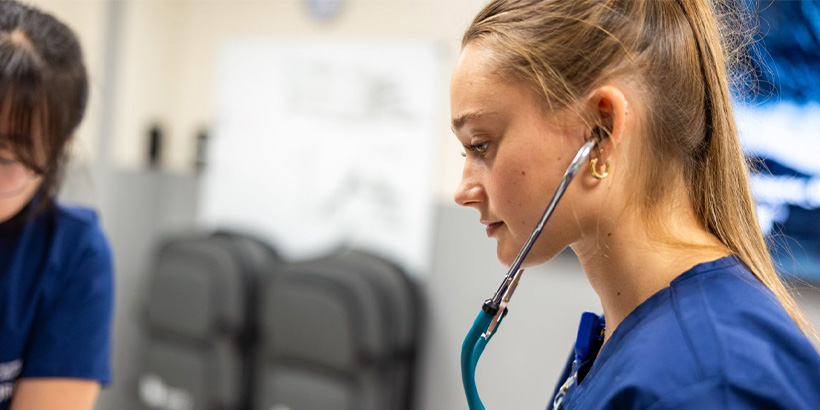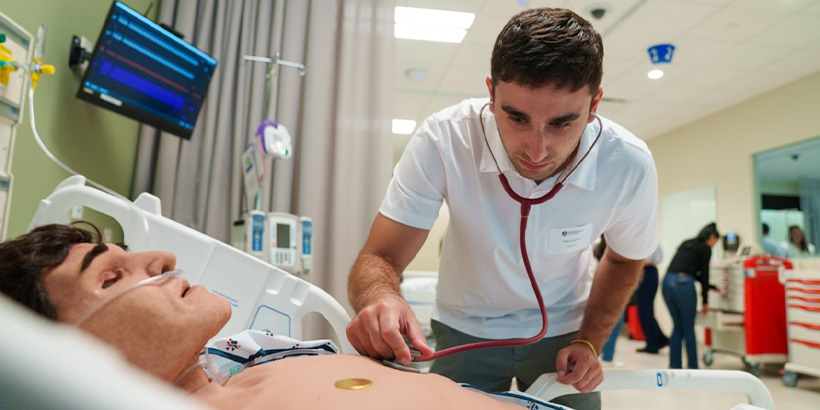How to Become a Nurse: A Step-by-Step Guide to Launching a Fulfilling Career

Pursuing a career in nursing is more than a professional decision—it's a calling. Whether you've just discovered your interest in healthcare or are looking to change careers, becoming a nurse opens the door to a deeply rewarding profession focused on compassion, service, and leadership.
At the Pepperdine College of Health Science's School of Nursing, the Entry Level Master's in Nursing, Clinical Nurse Leader (ELM-CNL) program is designed for individuals who hold a non-nursing bachelor's degree but feel drawn to make a difference in the lives of others through healthcare. This guide will walk you through the key steps and considerations for becoming a nurse and why an advanced, faith-based program like Pepperdine's may be the ideal path.
Why Choose a Career in Nursing?
Nursing is one of the most versatile and in-demand professions in healthcare. It offers:
- Job Security: With the U.S. Bureau of Labor Statistics projecting a 6% growth in registered nurse (RN) employment through 2032, nurses can feel confident entering a career that is stable and consistently in demand, even during times of change in the healthcare industry.
- Competitive Salaries: The national median salary for registered nurses is about $93,600 (as of May 2024), but starting-level RNs often earn from $60,000-$70,000, depending on state, setting, and education. RNs with advanced degrees (such as a master's in nursing), specialty training, or significant experience often make substantially more. Many positions also include additional benefits such as health insurance, retirement plans, and tuition assistance for those pursuing advanced degrees.
- Flexibility: Nursing is a career that adapts to your lifestyle and interests. Nurses work in a wide variety of settings—from hospitals and clinics to schools, nonprofit organizations, and even global health missions—making it possible to shape a career path that aligns with personal goals and passions.
- Impactful Work: Perhaps most importantly, nursing is a profession that makes a difference. Nurses
are frontline caregivers and patient advocates, supporting individuals and families
through some of life's most challenging and meaningful moments. Their presence brings
not only clinical expertise but also compassion and hope.
Ready to take the next step toward a rewarding nursing career?
The Entry Level MSN, Clinical Nurse Leader (CNL) program at Pepperdine offers a direct pathway for those with a non-nursing degree to enter the nursing profession. Gain hands-on clinical experience, leadership training, and advanced nursing skills to improve patient outcomes and elevate healthcare service.
Get in Touch
Fill out the Request Information form to learn about the opportunities that await you.
Start Your Application
Begin your application to Pepperdine today through NursingCAS.
Step 1: Understand the Types of Nursing Degrees
Before you start your journey, it's helpful to understand the common educational paths available in nursing:
| Degree Type | Who It's For | Outcome |
|---|---|---|
| Associate Degree in Nursing (ADN) | Entry-level nursing degree | Eligible for RN licensure |
| Bachelor of Science in Nursing (BSN) | Traditional 4-year nursing students | Eligible for RN licensure and Public Health Nurse License |
| Entry Level Master's in Nursing (ELM) | Career changers with a non-nursing degree | RN licensure + master's-level training |
Key Takeaway: If you already have a bachelor's degree in another field, an ELM program can fast-track
your nursing career without repeating undergraduate coursework.
Step 2: Meet the Prerequisites
To be eligible for the Entry Level Master's in Nursing at Pepperdine, applicants typically must:
- Two reference letters
- Two personal essays
- Valid CPR certification from the American Heart Association (AHA) in Basic Life Support (BLS)
- Completion of an undergraduate degree (BA/BS) with an overall GPA of 3.300 or higher from a regionally accredited educational institution
- Official transcripts for the past 7 years from all colleges or universities attended
- Completion of the required prerequisite courses or their equivalents with a GPA of 3.0 or higher
- Demonstrate a strong academic record, compassionate heart and commitment to service
Tip: Use your time before applying to strengthen your academic foundation and gain exposure
to healthcare environments through volunteering or shadowing experiences.
Step 3: Choose the Right Program
Not all nursing programs are alike. When selecting a nursing school, consider:
Accreditation and Quality
Ensure the program is accredited by reputable agencies such as the Commission on Collegiate Nursing Education (CCNE). This ensures quality instruction and eligibility for licensure exams.
Faith-Based and Mission-Driven Values
At the Pepperdine College of Health Science's School of Nursing, we integrate Christian values with academic excellence to prepare nurses who serve with both skill and heart.
Location and Clinical Access
Being near top hospitals and clinical sites enhances your hands-on experience. Pepperdine's Southern California location offers diverse, high-quality clinical placements.
Career Outcomes
Look for programs that support licensure preparation and provide pathways to leadership
roles, advanced practice, or doctoral studies.
Step 4: Apply to the ELM Program
The application process may include:
- Online Application
- Official Transcripts
- Letters of Recommendation
- Statement of Purpose
- Resume or CV
- Interview
Pro Tip: Highlight your motivation for entering nursing, especially how your previous academic
or professional experiences align with your nursing goals.
Step 5: Complete Your Nursing Education

Pepperdine's Entry Level Master's in Nursing, Clinical Nurse Leader program is designed to be completed in 7 semesters. You'll gain a strong foundation in:
- Clinical nursing practice
- Pathophysiology and pharmacology
- Health assessment and diagnosis
- Evidence-based practice
- Leadership and ethics
- Public and community health
You'll also complete extensive clinical rotations in real-world settings, under the supervision of experienced professionals.
Step 6: Pass the NCLEX-RN
To become a licensed registered nurse, you must pass the National Council Licensure Examination (NCLEX-RN) after graduating. Your nursing program should prepare you thoroughly for this critical step.
Checklist for NCLEX Success:
- Attend NCLEX prep workshops or courses
- Take multiple practice exams
- Review areas of weakness
- Maintain a study schedule
Step 7: Start Your Nursing Career
Pepperdine's ELM-CNL program supports the development of leadership skills, helping graduates build the necessary competencies and confidence to pursue such positions as they gain experience and continue to grow professionally after licensure.
- Medical-Surgical Nurse
- Pediatric Nurse
- Mental Health Nurse
- Community Health Nurse
- Geriatric Nurse
- Nurse Manager
- Case Manager
Many Pepperdine graduates also go on to serve in global health, public policy, and
underserved communities, bringing a mission-driven approach to healthcare leadership.
Start Your Journey Today

Pepperdine's ELM-CNL program is built for aspiring nurses like you—individuals with diverse academic backgrounds and a deep desire to serve. If you're ready to embrace a future in healthcare with faith, excellence, and purpose, we invite you to explore our program further.
Next Steps: